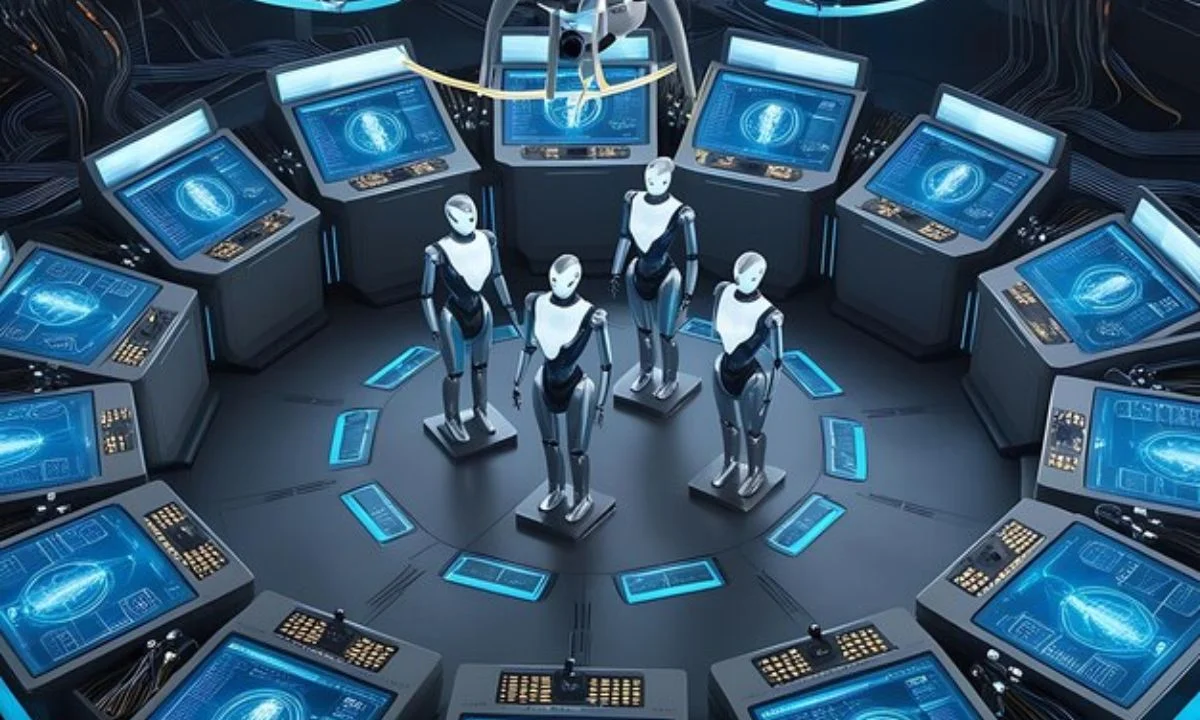Astrology is a study of the influence celestial bodies have on life on Earth. Among these, the outer planets—Jupiter, Saturn, Uranus, Neptune, and Pluto—play a crucial role. The astrology aspects of outer planets throughout the years are essential in shaping generational trends, societal shifts, and even personal life transformations. These planetary giants move slowly, meaning their effects are long-lasting, spanning years, decades, and even centuries.
Must read:Marketing Marketing Automation Tools Sleek_Flow: The Key to Boosting Business Efficiency
Understanding Astrology Aspects if Outer Planets Throughout the Years and Their Impact Over Time
Astrology aspects refer to the angles formed between planets in a natal chart or transit. When it comes to the outer planets, their positions can shape large-scale patterns in society and individual experiences over time. These aspects include conjunctions, oppositions, trines, squares, and sextiles. Each Astrology Aspects if Outer Planets Throughout the Years creates different energy, influencing how planets “communicate” and interact with each other.
For example, a conjunction happens when two planets align closely, amplifying their energies. Meanwhile, squares introduce tension, and trines bring harmony. Understanding these interactions helps astrologers predict shifts in global events and societal trends.
The Unique Influence of Each Outer Planet on Astrology Aspects
Jupiter’s Astrology Aspects Throughout the Years
Jupiter, known as the planet of growth, luck, and expansion, takes about 12 years to circle the zodiac. Its aspects influence optimism, abundance, and knowledge. Major Jupiter aspects, such as Jupiter trine Uranus or Jupiter square Neptune, signal periods of innovation, philosophical shifts, and spiritual awakenings.
Astrology Aspects if Outer Planets Throughout the Years history, Jupiter’s conjunctions and trines often correlate with periods of discovery and societal expansion. For instance, during the Renaissance, a major Jupiter conjunction brought about groundbreaking developments in art, science, and thought.

Saturn’s Influence: Structure and Discipline
Saturn, the planet of structure, responsibility, and limitation, takes around 29 years to complete its orbit. Its aspects reflect our relationship with authority, rules, and discipline. The famous Saturn Return marks a pivotal point in one’s life, occurring when Saturn returns to the same position it occupied at birth. This often signals a period of profound change and maturity.
Historically, Saturn square Uranus aspects have often signaled social upheaval, reflecting the clash between innovation and tradition. Such moments shape economic and political landscapes, influencing generations.
Uranus: The Planet of Change and Rebellion
Uranus, known for its unpredictability, takes about 84 years to complete a cycle through the zodiac. Its aspects are associated with sudden change, rebellion, and innovation. For example, Uranus in conjunction with Pluto was significant during the 1960s, marking an era of political movements, cultural revolution, and technological advances.
Uranus aspects often bring sudden transformations that reshape societies. These aspects mark the rise of technology, societal freedoms, and sometimes political revolutions.
Neptune: The Dreamy Visionary
Neptune, the planet of dreams, intuition, and spirituality, completes its orbit in 165 years. Its aspects are linked with illusion, art, and spiritual evolution. Neptune sextile Pluto, for example, has been a powerful aspect in shaping philosophical thought and collective spiritual awareness.
Neptune’s conjunctions and trines often coincide with artistic movements, changes in religious thinking, and advancements in media. The Neptune-Pluto trine in the early 20th century sparked a revolution in film and the arts, reflecting Neptune’s creative and transformative energy.

Pluto: The Force of Transformation
Pluto, the farthest and slowest-moving planet, symbolizes transformation, power, and the subconscious. Its aspects last the longest, influencing generations. A famous example is the Pluto-Uranus conjunction of the 1960s, which sparked global revolutions, civil rights movements, and shifts in consciousness.
Pluto’s transits and aspects often coincide with the collapse of outdated systems, making way for transformation. Its energy forces deep changes that affect generations, reshaping power dynamics and societal structures.
Astrology Aspects of Outer Planets and Their Influence on Generations
The Astrology Aspects if Outer Planets Throughout the Years help explain generational characteristics. Each generation is born under unique planetary alignments, influencing their collective mindset and values.
For example, people born during Pluto’s transit through Scorpio (1983–1995) tend to be more intense, driven by transformation and regeneration. Similarly, the Uranus-Neptune conjunction in the early 1990s signaled a time of technological growth, with the internet emerging as a revolutionary tool.
Long-term Societal and Global Shifts Based on Outer Planetary Movements
Outer planets not only shape personal growth but also play a key role in global and societal shifts. These planets influence political events, technological advancements, and cultural changes.
For instance, the Saturn-Pluto conjunction in Capricorn in 2020 coincided with the COVID-19 pandemic, marking a time of restriction, collapse, and transformation. This powerful conjunction emphasized themes of control, power, and rebuilding structures.
Similarly, Uranus’s transit through Taurus (2018–2026) reflects shifts in economics, agriculture, and environmental sustainability, as Taurus rules material resources. These outer planet movements guide the course of human history, influencing collective decisions and world events.

How Outer Planetary Movements Affect Personal Lives
Astrology Aspects if Outer Planets Throughout the Years move slowly and influence large-scale trends, they also impact individual lives. People with strong outer planet aspects in their natal charts may experience deep, lasting changes. For example, someone with Uranus square Sun might experience sudden, unexpected changes, while Neptune trine Moon might enhance creativity and intuition.
Understanding the astrology aspects of outer planets throughout the years provides insight into life’s ebb and flow, helping individuals align with cosmic energies for personal growth.
1. What are the astrology aspects of outer planets?
Astrology Aspects if Outer Planets Throughout the Years are the angles formed between planets. Outer planets like Jupiter, Saturn, Uranus, Neptune, and Pluto influence societal and generational trends through their long-term aspects.
2. How do Jupiter’s aspects affect life over time?
Jupiter’s aspects, such as conjunctions and trines, often bring periods of growth, expansion, and discovery, both on a personal and global scale.
3. What is the significance of Saturn’s aspects?
Saturn’s aspects emphasize discipline, structure, and responsibility. Major aspects like Saturn Return mark important periods of change and maturation in life.
4. How do Uranus aspects impact societal changes?
Uranus aspects are often associated with sudden change, rebellion, and innovation. These periods tend to reshape political and societal systems.
5. Why are Pluto aspects significant in astrology?
Pluto aspects represent deep, transformative energy that impacts both individuals and generations, often marking the end of one era and the beginning of another.
For further reading on outer planet astrology, you can explore the works of Astrodienst, or dive deeper into astrology with Cafe Astrology.
Conclusion: Astrology Aspects of Outer Planets Throughout the Years
The Astrology Aspects if Outer Planets Throughout the Years provide a roadmap for understanding the cosmic forces that influence both personal lives and global events. Whether it’s Jupiter bringing growth, Saturn enforcing discipline, or Pluto driving transformation, these planets shape society in profound ways. By studying their aspects, we gain insight into the patterns of history and the possibilities of the future.
For more information click here
















Leave a Reply